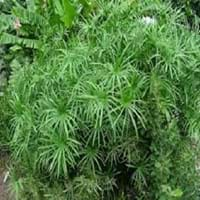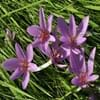Life Span
Perennial
Perennial
Type
Bulb or Corm or Tuber
Needled or Scaled Evergreen
Origin
Hybrid origin
Japan
Types
boissieri , cupanii , hungaricum , kesselringii
Not Available
Number of Varieties
Not Available
Habitat
Temperate Regions
ditches, Marshy ground
USDA Hardiness Zone
Not Available
5-8
AHS Heat Zone
Not Available
8-4
Sunset Zone
21,22
4, 5, 6, 7, 8, 9, 14, 15, 16, 17, 18, 19, 20, 21, 22, 23, 24
Habit
Clump-Forming
Pyramidal
Flower Color
Purple, Violet
Yellow
Flower Color Modifier
Bicolor
Bicolor
Fruit Color
Not Available
Red orange
Leaf Color in Spring
Green
Green
Leaf Color in Summer
Light Green
Dark Green
Leaf Color in Fall
Several shades of Green
Dark Green
Leaf Color in Winter
Light Green
Dark Green, Bronze
Leaf Shape
Long Linear
Umbrella Like
Plant Season
Spring, Fall
Spring, Summer, Fall, Winter
Sunlight
Full Sun, Partial Sun
Full Sun, Partial Sun
Type of Soil
Loam
Clay, Loam
The pH of Soil
Acidic, Neutral
Acidic, Neutral
Soil Drainage
Well drained
Well drained
Bloom Time
Late Summer, Early Fall
Summer
Tolerances
Drought
Drought
Where to Plant?
Ground
Container, Pot
How to Plant?
Divison, From bulbs, Seedlings
Rooted stem cutting
Plant Maintenance
Medium
Medium
Watering Requirements
Keep ground moist
Plant grows in water
In Summer
Lots of watering
Lots of watering
In Spring
Moderate
Moderate
In Winter
Average Water
Average Water
Soil pH
Acidic, Neutral
Acidic, Neutral
Soil Type
Loam
Clay, Loam
Soil Drainage Capacity
Well drained
Well drained
Sun Exposure
Full Sun, Partial Sun
Full Sun, Partial Sun
Pruning
no pruning required
Cut out old leaves
Fertilizers
All-Purpose Liquid Fertilizer
All-Purpose Liquid Fertilizer
Pests and Diseases
Dry root rot, Pest Free
Fungal Diseases
Plant Tolerance
Drought
Drought
Flower Petal Number
Single
Single
Foliage Texture
Coarse
Fine
Foliage Sheen
Glossy
Not Available
Attracts
Whiteflies
Hummingbirds
Allergy
Poisonous to grazing animals
Not Available
Aesthetic Uses
along a porch, deck or patio, Borders, Mixed Border, small hedge
Not Available
Beauty Benefits
No Beauty Benefits
Not Available
Environmental Uses
Air purification
Air purification
Medicinal Uses
anti rheumatic, cathartic
Tonic
Part of Plant Used
Root
Root
Other Uses
Showy Purposes
Basketary, Used in paper industry, Weaving into Mats and Bags
Used As Indoor Plant
No
No
Used As Outdoor Plant
Yes
Yes
Garden Design
Container, Cutflower, Foundation, Lawns and Turf, Mixed Border
Feature Plant, Foundation, Mixed Border, Topiary, Bonsai, Espalier
Botanical Name
COLCHICUM 'Lilac Wonder'
Cyperus alternifolius
Common Name
Hybrid Autumn Crocus, Hybrid Meadow Saffron
Galingale,Umbrella Palm
In Hindi
meadow saffron
mbrella Palm
In German
Herbstzeitlose
Cyperus alternifolius
In French
Colchique d'automne
Cyperus alternifolius
In Spanish
Estado de conservación
Cyperus alternifolius
In Greek
meadow saffron
Umbrella Palm
In Portuguese
Colchicum autumnale
Umbrella Palm
In Polish
Colchicum autumnale
Cibora zmienna
In Latin
autumnale
Umbrella Palm
Phylum
Tracheophyta
Magnoliophyta
Class
Magnoliopsida
Liliopsida
Family
Liliaceae
Sciadopityaceae
Clade
Angiosperms, Monocots
Angiosperms, Commelinids, Monocots
Tribe
Not Available
Not Available
Subfamily
Not Available
Not Available
Number of Species
Not Available
Not Available
Properties of Meadow Saffron and Umbrella Palm
Wondering what are the properties of Meadow Saffron and Umbrella Palm? We provide you with everything About Meadow Saffron and Umbrella Palm. Meadow Saffron doesn't have thorns and Umbrella Palm doesn't have thorns. Also Meadow Saffron does not have fragrant flowers. Meadow Saffron has allergic reactions like Poisonous to grazing animals and Umbrella Palm has allergic reactions like Poisonous to grazing animals. Compare all the properties and characteristics of these two plants. Find out which of these plant can be used as indoor plant. If you are interested to decorate your house and garden, find out aesthetic uses, compare them and select the plant which will beautify your surrounding. Along with beautification, try comparing medicinal and edible uses of Meadow Saffron and Umbrella Palm and you can choose the plant having best and most benefits.
Season and Care of Meadow Saffron and Umbrella Palm
Season and care of Meadow Saffron and Umbrella Palm is important to know. While considering everything about Meadow Saffron and Umbrella Palm Care, growing season is an essential factor. Meadow Saffron season is Spring and Fall and Umbrella Palm season is Spring and Fall. The type of soil for Meadow Saffron is Loam and for Umbrella Palm is Clay, Loam while the PH of soil for Meadow Saffron is Acidic, Neutral and for Umbrella Palm is Acidic, Neutral.
Meadow Saffron and Umbrella Palm Physical Information
Meadow Saffron and Umbrella Palm physical information is very important for comparison. Meadow Saffron height is 12.70 cm and width 20.30 cm whereas Umbrella Palm height is 610.00 cm and width 460.00 cm. The color specification of Meadow Saffron and Umbrella Palm are as follows:
Meadow Saffron flower color: Purple and Violet
Meadow Saffron leaf color: Green
Umbrella Palm flower color: Yellow
- Umbrella Palm leaf color: Green
Care of Meadow Saffron and Umbrella Palm
Care of Meadow Saffron and Umbrella Palm include pruning, fertilizers, watering etc. Meadow Saffron pruning is done no pruning required and Umbrella Palm pruning is done Cut out old leaves. In summer Meadow Saffron needs Lots of watering and in winter, it needs Average Water. Whereas, in summer Umbrella Palm needs Lots of watering and in winter, it needs Average Water.





